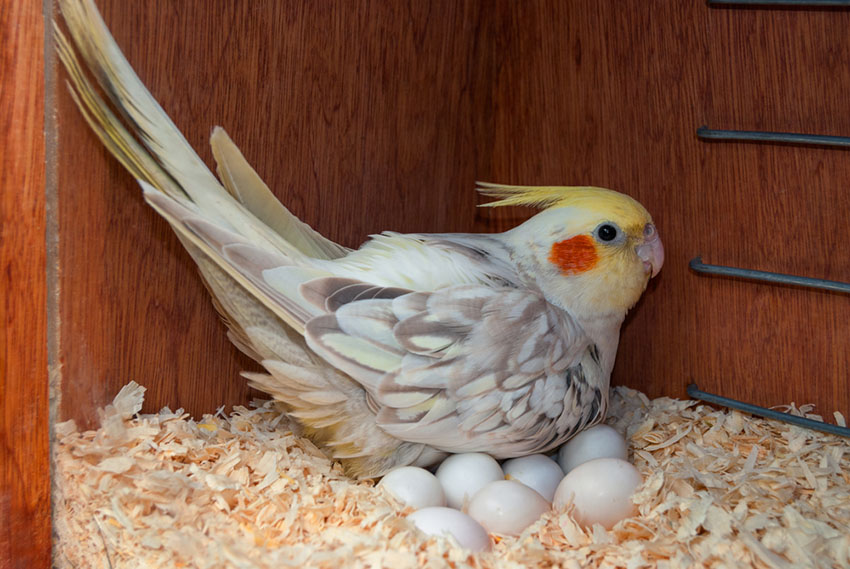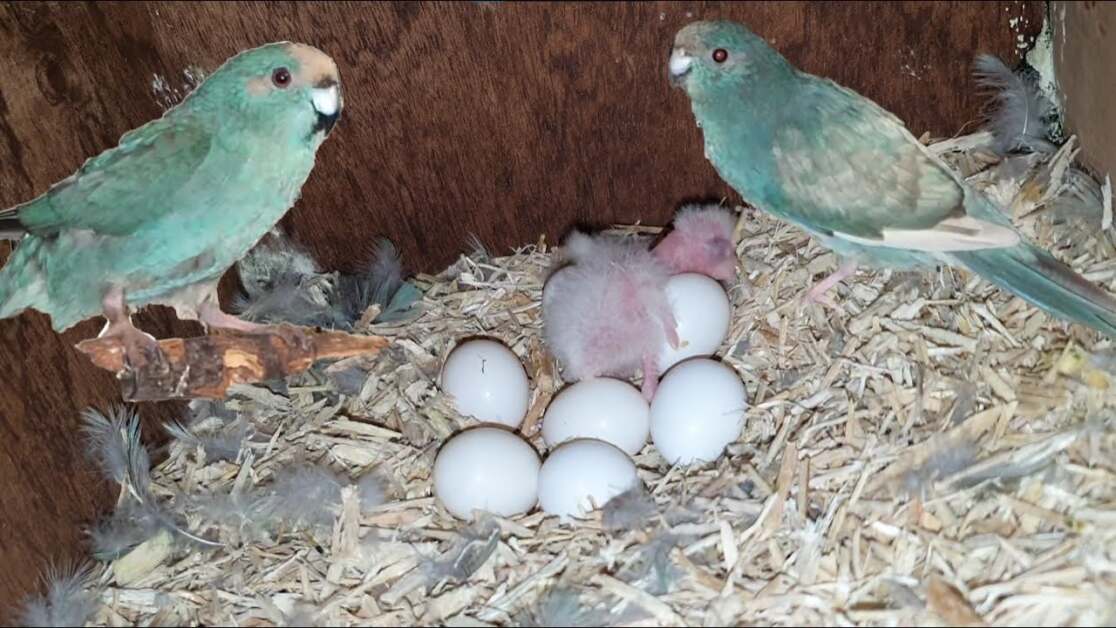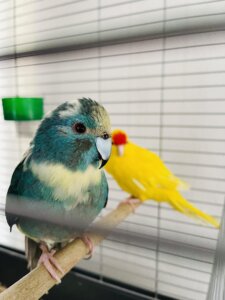How Long Do Kakariki Eggs Take to Hatch: A Complete Guide
Kakariki eggs take about 18-21 days to hatch. This period can vary slightly.
Kakarikis are charming, active parrots native to New Zealand. Breeding these birds can be a rewarding experience for enthusiasts. Understanding the hatching time is crucial for proper care. The incubation period typically lasts between 18 and 21 days. During this time, providing a stable environment is essential.
Temperature and humidity play a significant role. Parents usually take turns incubating the eggs. It’s fascinating to observe their natural behavior during this period. Knowing the hatching timeline helps in preparing for the arrival of chicks. Let’s dive deeper into the process and what to expect during these crucial days. This guide will help you ensure a successful hatching experience.
Introduction To Kakariki Eggs
Kakariki birds are vibrant and intriguing creatures. Their eggs are equally fascinating. If you are interested in breeding Kakariki birds, understanding their eggs is crucial. This section will provide a comprehensive introduction to Kakariki eggs.
Overview Of Kakariki Birds
Kakariki birds are native to New Zealand. They are known for their bright green feathers and playful nature. These birds are small, usually about 11 inches in length. They have a distinctive red or yellow crown on their heads. They are social and intelligent, making them popular pets. Kakariki birds are also excellent mimics, often learning to mimic human speech.
Importance Of Knowing Hatch Time
Knowing the hatch time of Kakariki eggs is essential for breeders. It helps in planning and providing the necessary care. Kakariki eggs usually take around 18-20 days to hatch. During this period, it is crucial to monitor the eggs closely. Proper temperature and humidity levels must be maintained. This ensures a healthy hatching process. Understanding the hatch time also helps in predicting the arrival of baby birds. This knowledge allows breeders to prepare for the new additions.

Credit: www.reddit.com
Breeding Season
The breeding season for Kakarikis is an exciting time. It usually occurs in the spring and early summer months. This is when these colorful parrots are most active in mating and nesting. Understanding the breeding season can help ensure the health and well-being of your Kakarikis.
Ideal Breeding Conditions
Kakarikis need specific conditions to breed successfully. The temperature should be warm, ideally between 65-75°F (18-24°C). They also need a quiet and secure environment. Providing a spacious and clean cage is essential.
A nesting box is important for Kakarikis to lay their eggs. The box should be around 10x10x12 inches. It must be lined with soft materials like wood shavings. Fresh food and water should always be available. Ensure their diet includes plenty of fresh fruits and vegetables.
Signs Of Mating
Watching for signs of mating can indicate that your Kakarikis are ready to breed. Here are some common signs:
- Increased vocalization
- Feather fluffing and preening
- Frequent visits to the nesting box
- Male feeding the female
- Pair bonding behaviors
Observing these behaviors can help you prepare for the arrival of eggs. Being aware of these signs ensures you provide the best care for your Kakarikis during this crucial time.
Egg Laying Process
The egg laying process of Kakariki birds is fascinating. It begins with the female bird preparing a nest. She finds a safe and comfortable spot for laying her eggs. This spot is often hidden to protect from predators.
Once the nest is ready, the female Kakariki starts laying her eggs. This process is crucial for the continuation of the species. Understanding this process helps in providing better care for these birds.
Number Of Eggs Laid
A female Kakariki typically lays between 4 to 8 eggs. The number of eggs can vary based on the bird’s health and environment. Each egg is carefully laid and then incubated by the mother.
Frequency Of Laying
Kakarikis usually lay eggs every two days. This frequency allows the mother to manage the incubation process effectively. Regular laying ensures that all eggs have a similar hatching time.

Credit: www.omlet.us
Incubation Period
The incubation period for Kakariki eggs is a critical time. During this period, the eggs develop and prepare to hatch. Understanding this phase is essential for anyone interested in bird breeding.
Duration Of Incubation
Kakariki eggs typically hatch in about 18 to 21 days. This duration can vary slightly based on factors like temperature and humidity. Keeping the nest at an optimal temperature ensures proper development.
Here’s a simple table summarizing the key points:
| Factor | Details |
|---|---|
| Incubation Duration | 18 to 21 days |
| Temperature | Optimal for egg development |
Role Of Parent Birds
The parent birds play a significant role during the incubation period. The female Kakariki usually sits on the eggs, keeping them warm. The male Kakariki often brings food to the female during this time. This teamwork is essential for the health of the eggs.
Key roles of parent birds include:
- Maintaining the right temperature for the eggs
- Providing food and care
- Ensuring the eggs are safe from predators
Understanding these roles helps in creating a supportive environment for the birds. This ensures a successful hatching process.
Factors Affecting Hatch Time
Understanding the factors that affect the hatch time of Kakariki eggs is essential for bird enthusiasts and breeders. These factors can influence the success rate and health of the chicks. Let’s explore the key elements that impact the incubation period.
Temperature And Humidity
The right temperature and humidity levels are crucial for Kakariki eggs. Eggs need a stable temperature between 99°F and 101°F. Variations can delay hatching or harm the embryos. Humidity should be around 50-60% during incubation. High humidity can cause poor air exchange, while low humidity can lead to dehydration.
| Factor | Optimal Range |
|---|---|
| Temperature | 99°F – 101°F |
| Humidity | 50% – 60% |
Health Of Parent Birds
The health of parent birds plays a significant role in hatch time. Healthy parents produce stronger eggs with better chances of survival. Nutrition and stress levels of the parents are also important. Ensure the parent birds have a balanced diet rich in vitamins and minerals. Stress-free environments contribute to healthier eggs and timely hatching.
- Provide a balanced diet for parent birds.
- Maintain a stress-free environment.
In summary, maintaining the right temperature and humidity, along with ensuring the health of the parent birds, can significantly impact the hatch time of Kakariki eggs. Monitor these factors closely to improve hatching success.
Caring For Eggs
Caring for Kakariki eggs is crucial to ensure they hatch successfully. This section provides essential tips for creating the right nesting environment and monitoring egg health. Follow these guidelines to give your Kakariki eggs the best chance of hatching.
Proper Nesting Environment
A suitable nesting environment is essential for Kakariki eggs. Provide a clean and spacious nest box. Ensure the nesting material is soft and comfortable. Use materials like shredded paper or wood shavings.
Maintain the right temperature and humidity levels. Kakariki eggs need a stable temperature of around 37.5°C (99.5°F). Use a digital thermometer to monitor this. Keep humidity between 50-60%. Use a hygrometer for accurate readings.
Monitoring Egg Health
Regularly check the eggs for any signs of damage. Gently handle the eggs to avoid breakage. Look for cracks or discoloration on the shells.
Candling is a useful technique for monitoring egg development. Shine a small light through the egg to check for growth. You should see a dark shadow and blood vessels inside healthy eggs. Perform candling every few days.
Keep a log of each egg’s progress. Note the date of laying and any changes observed. This helps track the development and identify any issues early.
| Parameter | Ideal Range |
|---|---|
| Temperature | 37.5°C (99.5°F) |
| Humidity | 50-60% |
- Provide a clean and spacious nest box
- Use soft nesting material
- Maintain stable temperature and humidity
- Regularly check for egg damage
- Use candling to monitor development
- Keep a progress log
Signs Of Imminent Hatching
Signs of imminent hatching in Kakariki eggs can be exciting and rewarding. Observing these signs helps in preparing for the arrival of baby birds. Let’s look at some key indicators that hatching is near.
Behavioral Changes
Mother Kakariki becomes restless. She may move around more. She will frequently adjust the eggs. This behavior ensures the eggs stay warm. The male Kakariki often brings more food. He also becomes more attentive to the nest.
Physical Indicators
Eggshells start to show tiny cracks. These cracks are known as pips. You may hear faint chirping from inside the eggs. This is a clear sign hatching is near. The eggs may also rock slightly. This movement indicates the chicks are active and ready to hatch.

Credit: www.facebook.com
After Hatching
After the eggs of Kakarikis hatch, the real work begins. The chicks need proper care and feeding to grow strong. This period is crucial for their development. Let’s look at how to care for the chicks after hatching.
Initial Care For Chicks
When the Kakariki chicks first hatch, they are very fragile. They need a warm and safe environment. Ensure the nest is clean and dry. Maintain a consistent temperature. The mother will keep them warm, but you might need to assist.
Make sure the nesting box is secure. Check it daily for any signs of distress or illness. The chicks will be dependent on their parents for warmth and food. This phase is critical for their survival.
Feeding And Development
Feeding the chicks properly is essential for their growth. The mother will feed them with regurgitated food. This is normal and provides the nutrients they need.
You can provide soft foods for the mother to eat. This includes:
- Boiled eggs
- Soft fruits
- Cooked vegetables
- Special bird formula
As the chicks grow, they will start to eat on their own. You can introduce seeds and pellets gradually. Monitor their progress and ensure they are eating well.
By following these steps, you can ensure your Kakariki chicks grow strong and healthy.
Common Issues And Solutions
Understanding the hatching process of Kakariki eggs can be rewarding. Yet, it comes with its challenges. Knowing common issues and how to address them can ensure a higher success rate.
Dealing With Unhatched Eggs
Unhatched eggs can be a concern for many bird enthusiasts. Here are some common causes and solutions:
- Infertility: Sometimes, eggs are simply not fertilized. This is normal and can happen with some pairs.
- Temperature Issues: Ensure the incubator maintains a stable temperature. Fluctuations can affect the embryo.
- Humidity Levels: Proper humidity is crucial. Too high or too low can hinder hatching.
To address these issues, regularly check and calibrate your incubator. Use a reliable hygrometer to monitor humidity levels.
Addressing Health Concerns
Health concerns can arise during the hatching period. Here’s how to manage them:
- Dehydration: Ensure chicks have access to clean water. Dehydration can be fatal.
- Weak Chicks: Provide a warm, safe environment. Weak chicks need extra care.
- Infections: Keep the nesting area clean. Regularly disinfect to prevent bacterial growth.
If you notice any health issues, consult a vet immediately. Early intervention can save lives.
Frequently Asked Questions
How Long Do Kakariki Eggs Take To Hatch?
Kakariki eggs typically take around 18 to 21 days to hatch. The incubation period can vary slightly depending on conditions.
What Is The Incubation Period For Kakariki Eggs?
The incubation period for Kakariki eggs is usually between 18 to 21 days. Proper temperature and humidity are essential.
How Do You Know When Kakariki Eggs Will Hatch?
Kakariki eggs hatch after about 18 to 21 days. Candling the eggs can help determine their development.
What Temperature Is Best For Hatching Kakariki Eggs?
The ideal temperature for hatching Kakariki eggs is around 37. 5°C (99. 5°F). Consistent temperature ensures proper development.
Conclusion
Kakariki eggs usually take around 19-21 days to hatch. Consistent warmth and proper care are vital. Monitoring the nest daily helps ensure a healthy environment. Patience is key during the incubation period. Enjoy observing these fascinating birds. Their journey from egg to chick is truly remarkable.
Happy bird watching!
Hello Dear, I'm Poli Kolymnia, owner of many birds (including budgies).
With a deep passion for these feathered companions, I'm here to share my expertise and extensive knowledge on birds care.
My articles cover essential topics like diet, housing, care, and health, providing practical tips to help you create a happy and thriving environment for your birds.





